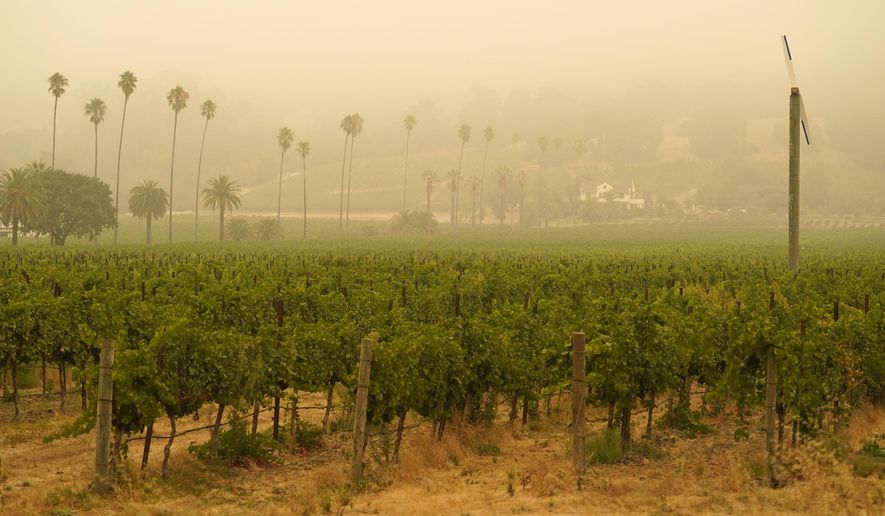SAN FRANCISCO (AP) - A dense smoke layer from dozens of raging wildfires darkened the skies and fouled the air along much of the West Coast on Thursday and was expected to hover in the region at least through the weekend.
Eerie orange and red skies across California, Oregon and Washington had mainly turned gray thanks to stronger winds coming in from the Pacific Ocean that helped to disperse thick smoke that acted as a filter scattering blue light and only allowed yellow, orange and red light to reach the ground.
“The wind has been blowing the smoke up more offshore so, the sun is not being blocked as much as it was yesterday,” said Steve Anderson, a meteorologist with the National Weather Service Bay Area office.
But as the wind scattered the smoke and a layer of air blocking it from reaching the ground started dissipating Thursday, smoke particles began mixing with ground-level air worsening air quality in much of California and parts of Oregon where wildfires are raging.
Satellite photos Thursday showed a towering band of smoke hovering along the Pacific coast.
Tatenysha Harris, who was shopping in Emeryville in the east San Francisco Bay Area, said it was the first time she has left her house in a week because of the poor air quality.
Her 8-year-old daughter suffers from severe asthma and Harris said fires that have raged in Northern California the past four years have made her dread this time of year because the smoke exacerbate her daughter’s breathing problems.
“Right now we’re getting through it by staying inside as much as possible with the windows shut,” she said. “We’re buying time until we buy a house and move away.”
“We can’t keep going through this every year,” she said.
Conditions in Northern California were expected to linger at least through Friday when the Bay Area Air Quality Management District expects to issue its 25th consecutive Spare The Air alert requiring residents to cut pollution - the longest stretch since the program began in 1991. The alerts began Aug. 18 after thousands of lightning strikes ignited three massive wildfires to the north, south and east of San Francisco.
Air quality warnings also were issued throughout the Pacific Northwest, and people in communities from southern Oregon to north of Seattle reported hazy skies and choking smoke.
The smoke was still blocking out so much sunlight that a forecast for Bay Area temperatures to climb to 90 degrees (32 Celsius) instead dipped to the 60s (15.5 Celsius).
In Los Angeles, at least six COVID-19 testing sites closed due to smoky air brought on by two massive wildfires burning in Angeles National Forest and the San Bernardino Mountains.
A respite from the bad air and a chance to see blue skies could come by the middle of next week when the forecast shows stronger winds and light rain, Anderson said.
“We’ll get more of an onshore flow, stronger winds, blowing the smoke out of our area but eastward into Nevada, Idaho, Utah, Colorado,” Anderson said.
The rain will not be enough to put out the fires but “it’ll definitely be welcomed by the firefighting efforts,” he said.




Please read our comment policy before commenting.